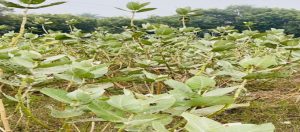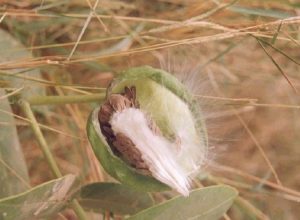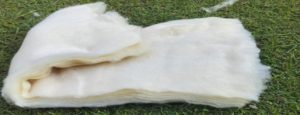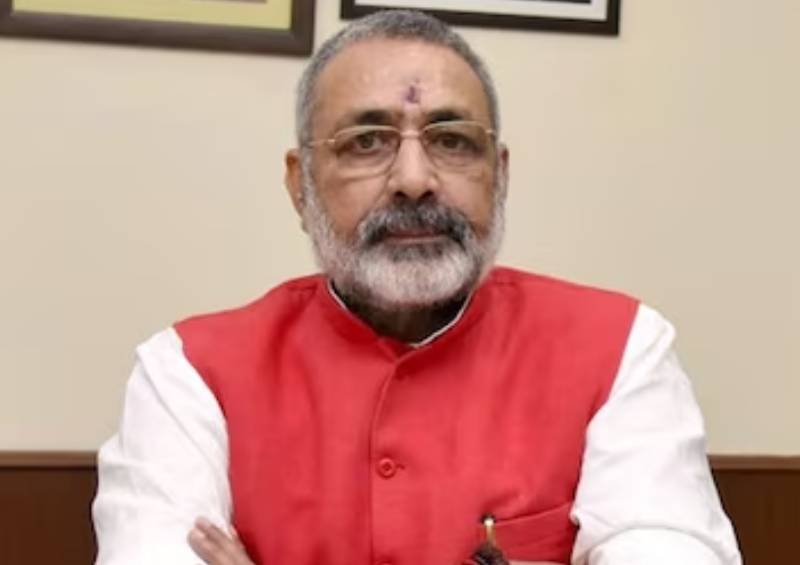This insightful quote highlights the essence of breakthroughs: when challenges intersect with fresh perspectives, and technology serves as the bridge to new solutions. In industries like textiles, this synergy is transforming traditional methods, driving sustainability, and unlocking new opportunities. The growing environmental awareness and supportive government policies are accelerating the use of bast fibers as reinforcements in composite materials, catering to the needs of a growing population. Their biodegradability and abundance make bast fibers ideal for applications in the automotive industry, structural composites, pulping, and textiles, marking a shift toward eco-friendly innovation.
Milkweed fibre, a natural marvel, is poised to revolutionize India’s textile landscape and contribute significantly to Prime Minister Narendra Modi’s vision of Atmanirbhar Bharat. With its promising qualities, sustainable cultivation, and immense potential to uplift farmers’ livelihoods, milkweed is the answer to the pressing demand for alternative fibres with the growing population that align with India’s socio-economic and environmental goals.
Milkweed Plant

Milkweed Pod

Milkweed is no ordinary fibre. Derived from the silky, hollow filaments encased within its seed pods, this lightweight fibre possesses exceptional properties that make it a frontrunner in the quest for sustainable materials. Its hollow structure lends it high compressibility and superior thermal insulation; with a thermal value nearly double that of 100% polyester nonwoven fabric. When blended with other fibres like polyester, wool, viscose or cotton, milkweed enhances the fabric’s softness, breathability, and warmth, creating products that are not only comfortable but also of premium quality.
Fibre Physical Properties Comparison
| Test Parameters | Milkweed | Cotton | Polyester | Wool |
| Thermal Value (Clo) | 6.28 | – | 3.35 | 1.17 |
| Moisture Regain (%) | 11 to 12 | 6.8 to 7.5 | 1.4 to 1.5 | – |
| Density (g/cm³) | 0.89 to 0.90 | 0.3 to 0.4 | 1.2 to 1.3 | – |
Beyond its technical attributes, milkweed’s cultivation presents a transformative opportunity for India’s farming community. This perennial crop requires minimal inputs, thrives in diverse soil conditions, and adapts well to changing climates. Once planted, it continues to yield for up to 10 years, with production increasing annually. Farmers can expect a net profit of approximately ₹1.5-2 lakh per acre, a substantial income boost compared to traditional crops like cotton. This not only ensures financial stability but also reduces dependency on resource-intensive crops, making it a sustainable and lucrative choice.
Nonwoven Fabric Comprising (30% Milkweed Fibre)

India, with a sheep population of more than 7.4 crore, produces 3.69 crore kilograms of carpet-grade wool annually but heavily relies on imports worth approximately Rs 1,800 crore as per the financial year 2023-24 for fine-grade wool, such as Merino, used in apparel. The wool produced domestically is generally not of superior quality, often causing discomfort and lacking skin-friendliness. While Pashmina wool, with a micron value below 20, is of exceptional quality, its production remains limited. Government initiatives like the Pashmina Wool Development Scheme and the Integrated Wool Development Programme have strengthened sheep rearing, pashmina production, and infrastructure in regions such as Ladakh, Jammu and Kashmir, and Rajasthan. The sector supports 35 lakh livelihoods and bolsters India’s exports of woollen carpets, fabrics, and garments to global markets.
The milkweed-wool blend emerges as a sustainable solution, reducing import dependency while enhancing fibre quality. Recent advancements by the Northern India Textile Research Association (NITRA) in collaboration with industry stakeholders have showcased the industrial viability of an innovative 80:20 wool-milkweed blend. This blend surpasses 100% wool in thermal insulation, lightweight properties, and softness, positioning it as a premium choice for high-end and functional textiles.
Milkweed’s versatility extends to a wide range of applications. From apparel, home textiles and hygiene products, its potential to replace conventional fibres in various products is vast. During my visit to Ladakh, I had the privilege of experiencing firsthand the exceptional quality of products made from milkweed fibre. I tested a quilt crafted from this fibre and found it remarkably warm and comfortable—I didn’t even need to use any heating appliances. I also tried a cap and jacket also developed by NITRA, which efficiently kept me warm throughout the trip. This winter, I have been regularly wearing milkweed products to personally evaluate their durability and performance. Based on my experience, I am confident that milkweed fibre is a promising alternative that can significantly contribute to employment generation and the nation’s growth.
Milkweed Jacket

Milkweed Hiking Cap

At the heart of this initiative lies a commitment to Atmanirbhar Bharat—building a self-reliant India through indigenous resources and innovative technologies. By integrating milkweed into the textile value chain, India can reduce its dependence on imported fibres and establish itself as a global leader in sustainable textiles. This aligns with our vision on promoting and aligning NBS (Nature-Based Solutions) with technical textiles, creating a ripple effect of economic growth and social empowerment.
The environmental benefits of milkweed are equally compelling. Its cultivation requires less water, fertilizers, and pesticides than cotton, mitigating the environmental stress associated with conventional agriculture. Additionally, as a plant-based, biodegradable fibre, milkweed aligns seamlessly with the global push toward sustainability and circularity. It offers a viable alternative to synthetic fibres by embracing milkweed, India takes a significant step toward reducing its reliance on fossil-derived materials and promoting eco-friendly practices in the textile industry.
Other endeavours in this domain is our focus on new-age fibers like jute-bamboo, sisal, flax, and ramie are revolutionizing the textile industry by offering sustainable and eco-friendly alternatives. India, with its vast biodiversity, is uniquely positioned to lead this transformation. Sisal, with its xerophytic resilience, thrives in arid conditions, yielding durable fibers ideal for textiles, ropes, and composites. Ramie, known for high-yield and versatility, with its eco-friendly properties and high tensile strength is used in apparel. Similarly, the best grades of flax are used for linen fabrics such as damasks, lace and sheets. Currently, there is huge import dependence on flax fibre and 100% linen fabric; this initiative would open a new door of opportunities in the textiles sector. Coarser grades are used for the manufacture of twine and rope.
Furthermore, the Jute-Bamboo fiber represents a groundbreaking innovation and a promising prospect for the textile industry, offering a sustainable alternative to synthetic fibers and another exceptional option for linen fabric. Natural fibers like bamboo, which spans 1.39 crore hectares and yields 1.4 crore tonnes annually, exemplify India’s potential in sustainable production. These fibers are being utilized across the textile sector, from apparel to technical textiles, ropes, composites, and home furnishings. These fibers not only require minimal resources, adapt to diverse climates, and support rural livelihoods by boosting farmers’ income but also promote sustainability and circularity.
The journey of milkweed, from a humble weed to a fibre of national significance, is a testament to India’s ingenuity and resilience. With concerted efforts from researchers, farmers, and industry stakeholders, this fibre has the potential to redefine India’s textile narrative. It symbolizes the convergence of tradition and innovation, where sustainable practices meet cutting-edge technology to create products that are not only world-class but also deeply rooted in India’s ethos.
In line with Prime Minister Narendra Modi’s vision, “In the innovation index, we are going up. We must make India an attractive destination for innovation,” India is poised to become a global hub for innovation. As the textile industry adapts to the challenges of a growing population and a changing climate, milkweed emerges as a symbol of sustainability, combining economic potential with environmental responsibility. By embracing milkweed, India is paving the way for a greener, more inclusive future—one where the ideals of Atmanirbhar Bharat are intricately woven into the nation’s progress. With dedicated efforts to expand cultivation, enhance processing, and accelerate R&D, India is leading a textile revolution that seamlessly merges tradition with innovation, responding to both global environmental needs and market demands.
(The Author is Union Minister for Textiles, Govt of India. Courtesy: PIB)








